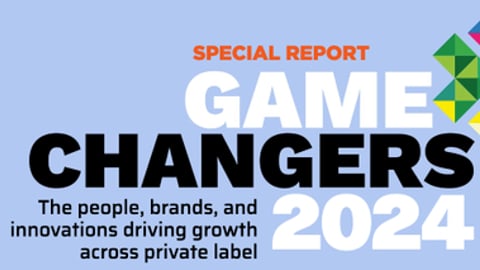NRF Economist Bullish On Nation's Economic Outlook
While the nation continues to face economic challenges, the chief economist for the National Retail Federation is optimistic the U.S. economy will do well the remainder of 2024.
“No one can accurately forecast what surprises the next year might hold, but the foundation of the economy is relatively sturdy and still on a sustainable path,” said Jack Kleinhenz, the NRF’s chief economist. “Barring unexpected shocks, it should continue growing in 2024, although not spectacularly.”
His comments came in the April issue of NRF’s Monthly Economic Review, which noted that NRF forecast last month that 2024 retail sales will grow between 2.5% and 3.5% in 2024.
While that marks a slowdown from the unusually rapid growth seen since the pandemic, the projection is in line with the 10-year pre-pandemic average of 3.6%. Overall economic growth is expected to be modest, but consumer spending should hold up as inflation slows gradually and job growth remains positive even as unemployment rises.
Adjusted for inflation, GDP is expected to grow about 2.3% year-over-year, slower than 2023’s 2.5% but still strong enough to sustain job growth that drives consumer spending, Kleinhenz said. Consumer spending is expected to be up about 2%, which compares with 2.3% in 2023.
“Consumers’ behavior and spending power are tied to their financial health, and the consumer sector looks good at the moment,” he added.
While wage growth should ease toward 3.5% by the end of the year and employers should create about 100,000 fewer new jobs each month, disposable personal income was up 4.1% year over year in February. Rising home and stock prices outpaced inflation in 2023, helping boost household wealth by 8% year-over-year in the fourth quarter and stimulating consumer spending via the “wealth effect,” which should carry over into 2024, the NRF said.
While many consumers are feeling a pinch from tighter credit and inflation, the Federal Reserve Bank of New York reported in February that more consumers said it was easier to access credit than a year ago, and the University of Michigan said consumer confidence reached its highest level since July 2021.
NRF officials are also watching payroll and income data “very closely” since the slower job and wage gains are key factors behind the slower growth expectations for GDP and spending.
Meanwhile, a combination of moderating wage growth, supply chain healing, slightly weaker consumer demand and higher interest rates have helped bring down inflation meaningfully, Kleinhenz said. While there was a slight reacceleration in prices at the start of 2024, he expects inflation to steadily move down and be at 2.2% year over year by the end of the year.
Also, interest rates could also be on their way down. Citing remarks by Fed Chairman Jerome Powell last month that the economy has made “considerable progress” and that inflation “has eased substantially,” Kleinhenz expects the Fed to hold rates steady until June, when it will likely cut rates a quarter of a percentage point. Subsequent cuts in September and December could bring the total reduction to three-quarters of a percentage point.




